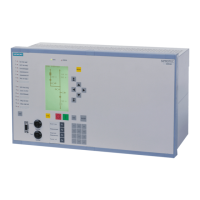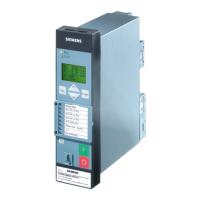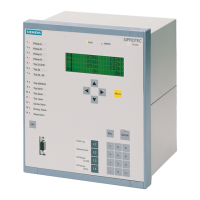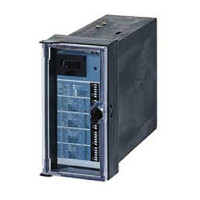•
User configurable interlocking checks
– Switching Authority
– Device Position Check (set vs. actual comparison)
– Interlocking, Zone Controlled (logic using CFC)
– System Interlocking (centrally, using SCADA system or substation controller)
– Double Operation (interlocking against parallel switching operation)
– Protection Blocking (blocking of switching operations by protective functions).
•
Fixed Command Checks
– Internal Process Time (software watch dog which checks the time for processing the control action
between initiation of the control and final close of the relay contact)
– Setting Modification in Process (if setting modification is in process, commands are denied or
delayed)
– Operating equipment enabled as output (if an operating equipment component was configured, but
not configured to a binary input, the command is denied)
– Output Block (if an output block has been programmed for the circuit breaker, and is active at the
moment the command is processed, then the command is denied)
– Board Hardware Error
– Command in Progress (only one command can be processed at a time for one operating equipment,
object-related Double Operation Block)
– 1-of-n-check (for schemes with multiple assignments, such as relays contact sharing a common
terminal a check is made if a command is already active for this set of output relays).
Monitoring the Command Execution
The following is monitored:
•
Interruption of a command because of a Cancel Command
•
Runtime Monitor (feedback message monitoring time)
Interlocking
System interlocking is executed by the user-defined logic (CFC).
Description
Interlocking checks in a SICAM / SIPROTEC 4 system are normally divided in the following groups:
•
System interlocking relies on the system data base in the substation or central control system.
•
Bay interlocking relies on the object data base (feedbacks) of the bay unit.
•
Cross-bay interlocking via GOOSE messages directly between bay units and protection relays (with
IEC61850: The inter-relay communication with GOOSE is performed via the EN100 module)
The extent of the interlocking checks is determined by the configuration of the relay. To obtain more informa-
tion about GOOSE, please refer to the SIPROTEC 4 System Description.
Switching objects that require system interlocking in a central control system are assigned to a specific param-
eter inside the bay unit (via configuration matrix).
For all commands, operation with interlocking (normal mode) or without interlocking (Interlocking OFF) can
be selected:
•
For local commands, by activation of "Normal/Test"-key switch,
•
For automatic commands, via command processing. by CFC and deactivated interlocking recognition,
•
For local / remote commands, using an additional interlocking disable command, via Profibus.
2.27.4
2.27.4.1
Functions
2.27 Breaker Control
356 SIPROTEC 4, 7SJ62/64, Manual
C53000-G1140-C207-8, Edition 08.2016

